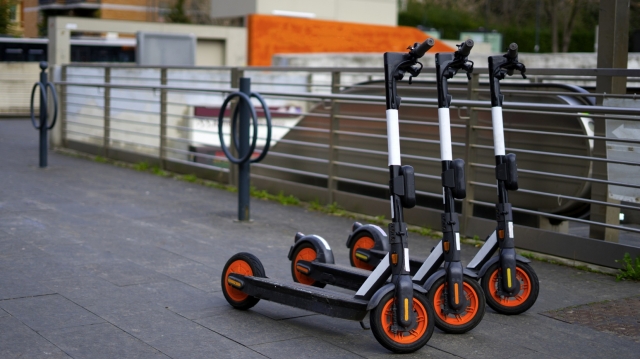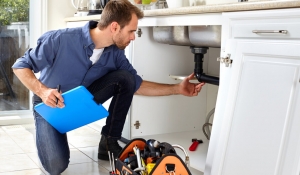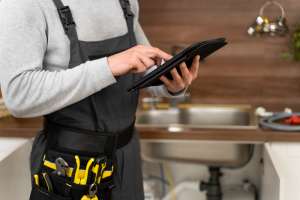Are you thinking about joining the electric scooter revolution? You're not alone! With urban mobility evolving and gas prices skyrocketing, electric scooters have become an increasingly popular transportation option. But here's the thing – rushing into a purchase without proper research can lead to serious buyer's remorse.
Let's dive into the most common pitfalls you should avoid when buying an electric scooter to ensure you make a choice you'll be happy with for years to come.
Critical Research Mistakes That Cost New Buyers
Before pulling out your credit card, understanding what you actually need from an electric scooter is crucial. Many buyers skip this fundamental step and end up with a ride that doesn't suit their lifestyle.
Overlooking Your True Usage Needs Before Purchase
The first step in avoiding electric scooter mistakes is honestly assessing how you'll use your scooter. Will you be commuting daily through busy city streets? Taking weekend joy rides? Understanding your primary use case dictates everything from battery capacity to tire type.
For people with mobility challenges or those seeking extra stability, an electric 3 wheel bike might be a better solution than a traditional two-wheel scooter. These provide superior balance while still offering the conveniences of electric transportation, especially for carrying groceries or other items.
Weather compatibility is another factor many buyers overlook. If you live in Seattle or Portland, you'll need a scooter with decent water resistance, while Arizona residents should prioritize heat management features for battery longevity.
Fixating on Maximum Speed Instead of Practical Features
There might be countless mistakes – buyers obsessing over top speed when most urban areas limit electric scooters to 15-20 mph anyway. What matters more is the balance between speed and range. A scooter that can sustain 15 mph for 20 miles is generally more useful than one that hits 25 mph but dies after 8 miles.
Neglecting to Research Local Electric Scooter Regulations
The legal landscape for electric scooters varies wildly depending on where you live. Many buyers discover too late that their shiny new purchase faces strict restrictions in their city. Before making any decisions, check your local transportation department's website to understand:
- Whether scooters are allowed on sidewalks, bike lanes, or roads
- Required safety equipment (helmets, lights, reflectors)
- Age restrictions and license requirements
- Maximum speed limits in different zones
Failing to do this research can result in hefty fines or even having your scooter impounded. Trust me, that's a costly mistake you don't want to make!
Technical Specification Errors When Buying Electric Scooters
Once you've done your basic research, understanding the technical specifications becomes crucial to avoid common electric scooter errors.
Battery and Range Misconceptions
Perhaps the biggest area of disappointment comes from misunderstanding battery performance. Manufacturer claims about range are typically based on ideal conditions – a lightweight rider on a flat surface in perfect weather.
Real-world range can be 20-40% less than advertised figures. If a scooter claims 20 miles of range, plan for 12-16 miles to be safe, especially if you're heavier than average or live in a hilly area.
Battery technology matters too. Many budget scooters use older lead-acid batteries that are heavier and degrade faster than modern lithium-ion options. The difference can be dramatic over the life of your scooter.
Motor Power Misunderstandings
Wattage ratings often mislead buyers. A 350W motor might sound less powerful than a 500W one, but peak performance depends on multiple factors:
- Continuous vs. peak power ratings
- Motor efficiency
- Controller quality
- Battery output capacity
This table highlights how different motor configurations perform in real-world scenarios:
|
Motor Type |
Hill Climbing |
Acceleration |
Top Speed |
Best For |
|
250-350W Single |
Struggles on slopes >8% |
Moderate |
15-18 mph |
Flat urban areas |
|
500W Single |
Handles slopes up to 15% |
Good |
18-22 mph |
Mixed terrain |
|
Dual Motor 2x350W |
Excellent on hills up to 25% |
Very fast |
20-25 mph |
Hilly areas |
Weight Capacity and Portability Trade-offs
The electric scooter buying guide that many retailers offer often glosses over an important reality: scooters that fold easily for portability typically have lower weight capacities and less robust construction.
If you weigh over 220 pounds or regularly carry a heavy backpack, prioritize models with steel frames and higher weight ratings over ultra-portable options. Your safety depends on it.
Safety and Practicality Oversights
Avoiding electric scooter pitfalls means considering not just the scooter itself, but how you'll use it day-to-day.
Underestimating Safety Equipment Requirements
A helmet isn't just a good idea – it's essential. Research shows that most serious electric scooter injuries involve riders without helmets. Beyond basic head protection, consider:
- Knee and elbow pads for beginners
- High-visibility clothing or reflective tape
- Quality front and rear lights (even if your scooter has built-in lights)
- A loud horn or bell
Storage and Security Planning Failures
Nothing ruins the joy of owning an electric scooter faster than having it stolen. Yet many buyers don't think about security until it's too late. Invest in a quality U-lock or chain lock, and research secure storage options at your typical destinations.
Additionally, consider where you'll store your scooter at home. Some models are easier to carry upstairs or fit in small apartments than others. This practical consideration is frequently overlooked during the excitement of purchasing.
The Road Ahead
Now that you understand the common pitfalls in buying an electric scooter, you're better equipped to make a choice that truly fits your needs. Remember, the perfect scooter isn't necessarily the fastest or most expensive – it's the one that reliably meets your daily transportation requirements while fitting your lifestyle.
By avoiding these electric scooter mistakes and following a comprehensive electric scooter buying guide, you'll not only save money but also enjoy a safer, more satisfying riding experience for years to come.
FAQs
1. What's the most important spec to check when buying an electric scooter?
While range and speed get attention, the weight capacity rating is crucial. A scooter rated too low for your body weight will suffer from reduced range, slower speeds, faster component wear, and potential safety issues. Always choose a model rated at least 20-30 pounds above your weight.
2. Are waterproof ratings on electric scooters reliable?
Most electric scooters aren't fully waterproof but feature varying degrees of water resistance. IP54 ratings are common and protect against light rain, but avoid puddles and never ride in heavy downpours. Remember that water damage often voids warranties, so err on the side of caution.
3. What maintenance should I expect in the first year of ownership?
Plan for tire inspections every 2-3 months, brake adjustments twice yearly, and occasional bolt tightening. Most quality scooters need minimal maintenance, but setting aside $50-100 annually for basic upkeep is wise, especially if you ride frequently or on rough terrain.






